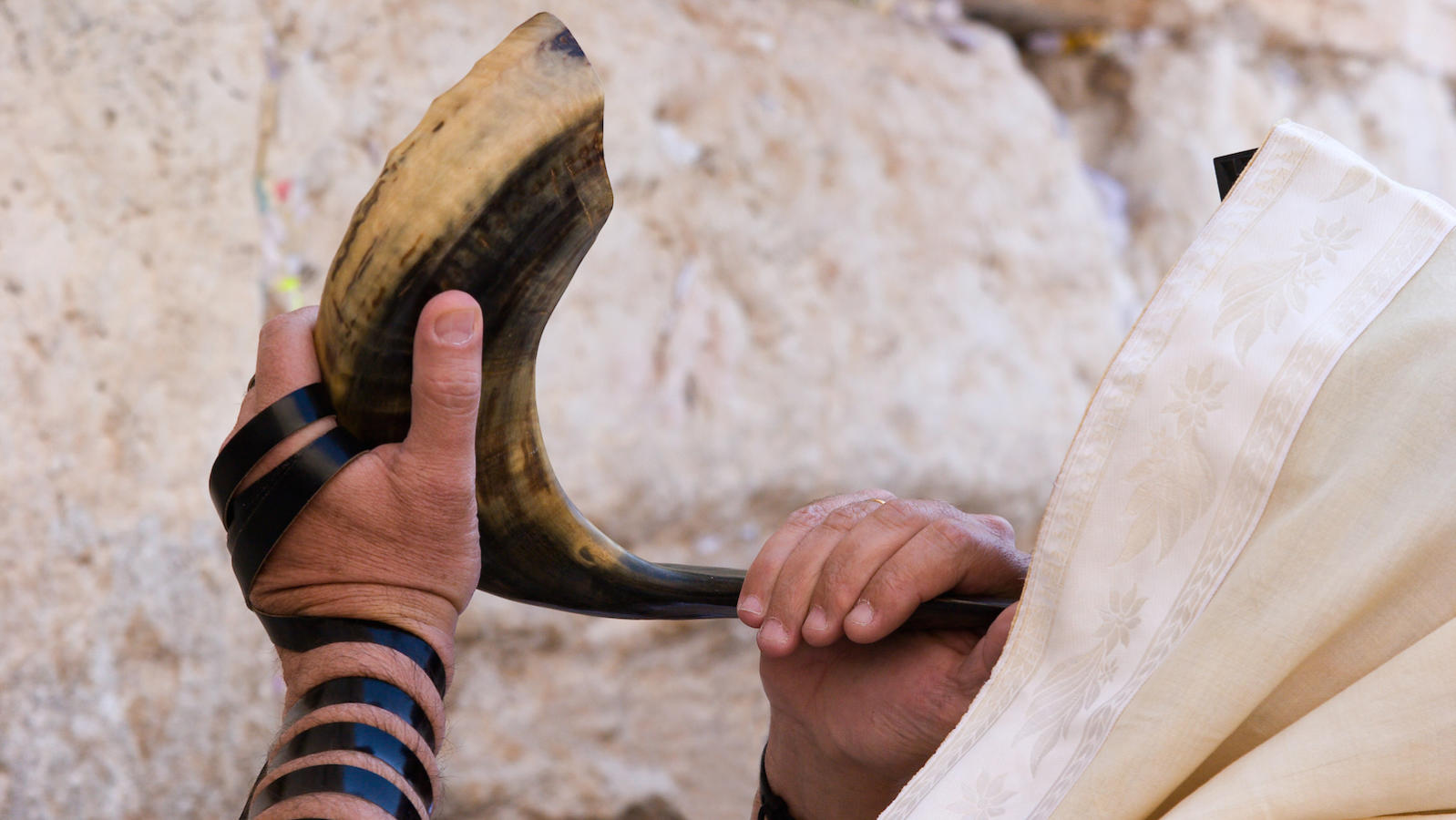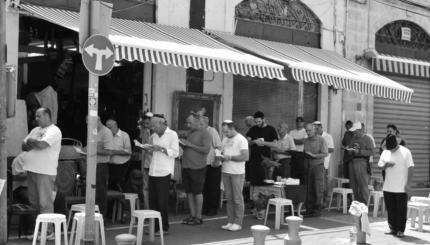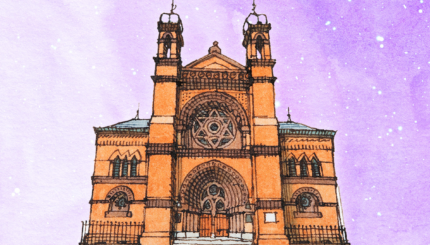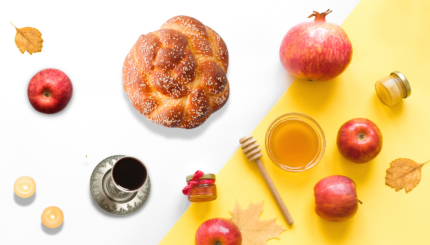Rosh Hashanah is referred to in the Bible as Yom Teruah (the day of sounding of the Shofar) or Yom Hazikaron (the day of remembering), but it is its later, rabbinic interpretation as the New Year that has become the best known to us. Rosh Hashanah also is traditionally associated with the creation of the world. This emphasis on new beginnings lends itself easily to the prevailing High Holiday themes of repentance and renewal.
In the synagogue on Rosh Hashanah, we see a number of themes repeated in both the liturgy and Torah service. While the structure of the services is quite similar to daily liturgy, there are numerous additions that add powerful reminders that this is a time for us to take stock of ourselves before we enter the coming year. Liturgical poems that emphasize God’s kingship and judiciousness put us in the proper mood for the day. These are complemented by some additions to the standard prayers as well. For example, in the silent Amidah, one line is added from Rosh Hashanah through Yom Kippur beginning with “zokhrenu l’hayyim…” which asks God to remember us for life and to inscribe us in the book of life, while another line, “mi khamokha av harahamim…” asks God to remember us with mercy.
In the additional service, Musaf, there are three extra blessings in the Amidah, known as malkhuyot (kingship), zikhronot (remembrances), and shofarot (blasts of the ram’s horn). Each of these blessings is comprised of ten biblical verses on that theme, and as a unit they bring forth the following three ideas: God is King, God punishes the wicked and rewards the just, and God has been revealed in the past and will be revealed in the future in the end of days. In liberal movements, such as Reform Judaism, where Musaf is generally not recited, these verses are added to the morning, or Shachrit, prayer.
The Torah readings for the two days of Rosh Hashanah highlight themes of birth, creation, and mercy through the story of the birth of Isaac, and raise issues of fear, judgment, and testing of faith in the telling of Isaac’s would-be sacrifice (the Akedah.) The rabbis connect the ram, which thankfully substitutes for Isaac’s sacrifice, to the Shofar (made of a ram’s horn) that is usually blown shortly after the Torah service and again during the repetition of the Amidah in the Musaf.
It is these blasts of the shofar that often make the biggest impression on this holiday. The three different sounds are the tekiah (a single, long blast), the shevarim (three shorter blasts which together should be about the same length as one tekiah), and the teruah (nine staccato blasts, also about the same length of time as the tekiah and shevarim). There are different opinions about what can be evoked in this series of blasts. Some view it simply as an alarm that awakens us to our need to do teshuvah (repentance) and others see the broken teruah, for example, as the sound of wailing, perhaps in fear of judgment. Whatever the interpretation, the poignant cries of the Shofar can be quite a moving juxtaposition to the otherwise wordy High Holiday liturgy.
There is another liturgical addition to Rosh Hashanah that is quite unlike any other service in Judaism — Tashlich (literally, throwing away). On the afternoon of the first day of Rosh Hashanah (unless it is also Shabbat, in which case it is done the second day of the festival), many people walk to a flowing body of water to symbolically cast away their sins in the form of bread crumbs thrown upon the waters. A verse from the prophet Micah 7:19 is cited as the origin for this custom. It states, “You will cast away your sins into the depths of the sea.” While this was once controversial among those who believed it would trivialize the process of repentance, it has remained a very popular custom to this day.
Rosh Hashanah
Pronounced: roshe hah-SHAH-nah, also roshe ha-shah-NAH, Origin: Hebrew, the Jewish new year.
Torah
Pronunced: TORE-uh, Origin: Hebrew, the Five Books of Moses.
teshuvah
Pronounced: tuh-SHOO-vah, (oo as in boot) Origin: Hebrew, literally “return”, referring to the “return to God” teshuvah is often translated as “repentance.” It is one of the most significant themes and spiritual components of the High Holidays.
shofar
Pronounced: sho-FAR or SHO-far, Origin: Hebrew, a ram’s horn that is sounded during the month of Elul, on Rosh Hashanah, and on Yom Kippur. It is mentioned numerous times in the Bible, in reference to its ceremonial use in the Temple and to its function as a signal-horn of war.



